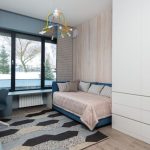How to Use Hardscaping for a Modern Look
Creating a modern outdoor space is all about balancing aesthetics and functionality. One of the most effective ways to achieve this balance is through hardscaping. This approach incorporates non-plant elements such as patios, walkways, walls, and water features to enhance the overall design of your landscape. By strategically using hardscaping, you can create a sleek, contemporary environment that complements your home’s architecture while offering practical benefits. Here’s how to effectively incorporate hardscaping into your outdoor design for a modern look.
Choosing the Right Materials
The first step in achieving a modern aesthetic through hardscaping is selecting the appropriate materials. Contemporary designs often favor clean lines and minimalist features. Opt for materials such as concrete, natural stone, or porcelain tiles. These materials not only offer durability but also contribute to a sleek appearance.
For a cohesive look, consider using a uniform color palette. Shades of gray, white, and earthy tones work well in modern designs. If you want to add a touch of warmth, consider incorporating wood elements, but be selective to maintain the minimalistic vibe. Reclaimed wood can introduce character while still aligning with a modern aesthetic.
Designing Functional Spaces
A modern landscape is not just about visual appeal; it must also be functional. Hardscaping allows you to create designated spaces for various activities, enhancing the usability of your outdoor area. Start by planning zones for dining, lounging, and entertaining.
A well-designed patio can serve as a central gathering area. Consider using large format tiles or poured concrete to create an expansive, seamless look. Add built-in seating or a fire pit to make the space more inviting. If you have a pool, surround it with sleek stone pavers to create a sophisticated atmosphere. Remember to ensure that your hardscaping elements complement each other in style and scale.
Incorporating Texture and Patterns
While modern design often leans towards simplicity, incorporating texture and patterns can add depth and interest. Avoid overwhelming your space with too many materials or intricate designs; instead, use subtle variations to create a dynamic environment.
For example, you can combine smooth concrete slabs with rough-hewn stone borders. This contrast can define spaces without cluttering the area. Patterns can also be introduced through the layout of your hardscaping. Consider a herringbone pattern for pathways or a grid layout for patios to lend sophistication to your outdoor space.
Utilizing Vertical Elements
Vertical hardscaping can dramatically enhance the modern look of your landscape. Features like retaining walls, vertical gardens, or decorative screens not only provide structure but also create visual interest.
A well-placed retaining wall can define different levels in your yard, adding dimension to the landscape. Use materials that mirror your other hardscaping choices to maintain a unified appearance. Vertical gardens, which incorporate plants into wall structures, can bring a splash of greenery without compromising the modern aesthetic. They also offer a unique visual element that draws attention.
Lighting for Impact
Lighting is a crucial component of modern hardscaping. Properly placed lighting can accentuate architectural features while adding ambiance to your outdoor spaces. Opt for minimalist fixtures that blend seamlessly into the landscape, such as recessed lighting in steps or subtle LED strips along walls.
Consider incorporating uplighting in trees or architectural elements to create dramatic shadows and highlights. Pathway lights can guide guests while also enhancing the overall look of your hardscape. Be mindful of the placement and intensity of your lighting to ensure that it accentuates rather than overwhelms the space.
Creating a Harmonious Balance
Successfully using hardscaping for a modern look is all about creating a harmonious balance between the built environment and natural elements. While hardscape materials provide structure and style, integrating softscape features like plants, grasses, and trees can soften the overall look and create a welcoming atmosphere.
Choose plants that complement the hardscaping materials, maintaining the modern aesthetic. Succulents, ornamental grasses, and low-maintenance shrubs can add life without detracting from the clean lines and simplicity of your design. By thoughtfully blending hardscape and softscape elements, you can achieve a modern outdoor space that is both functional and visually stunning.
Elevating Your Outdoor Space
Incorporating hardscaping into your landscape design can elevate your outdoor space to new heights. By selecting the right materials, designing functional areas, and balancing hardscape with greenery, you can create a modern oasis that reflects your personal style. With careful planning and a focus on simplicity, your outdoor area can become a stunning extension of your home, perfect for relaxation and entertaining alike.


